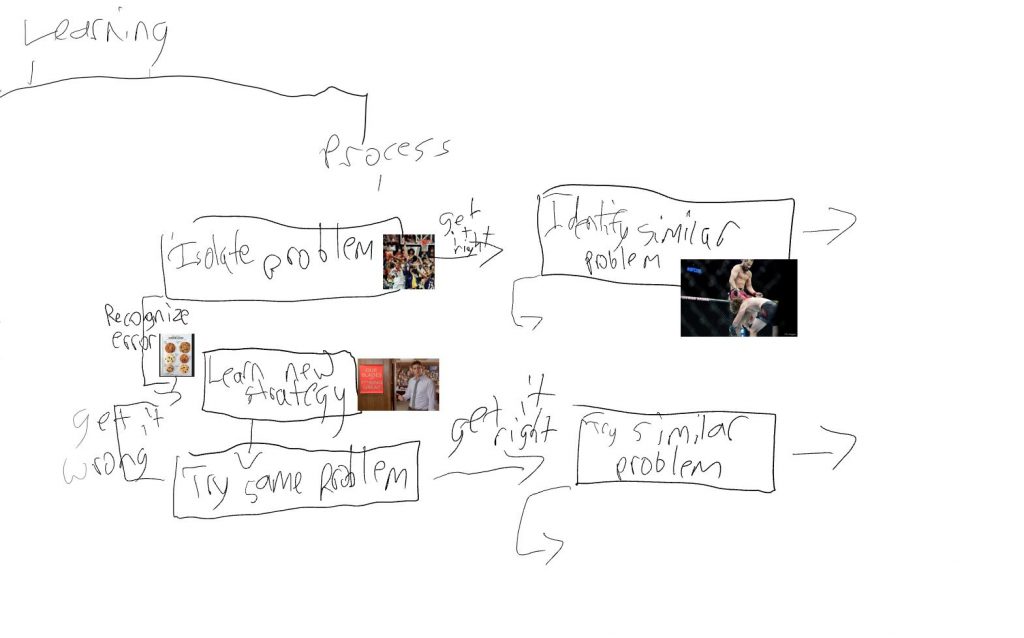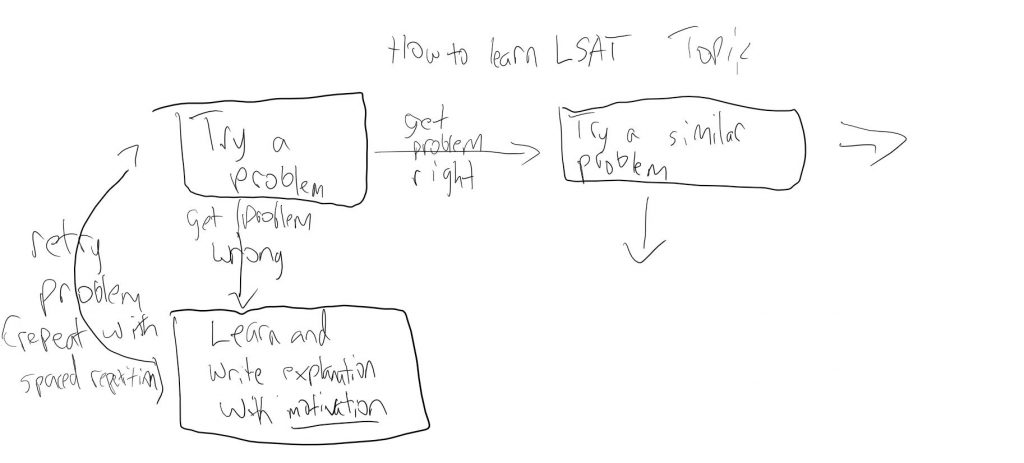I work with a lot of LSAT clients who have struggled for a long time on the LSAT. In fact, that’s my main type of client: I’m rarely someone’s first port of call on their LSAT journey.
Often, their scores have increased a bit over a long period of time (like a 145 to a 159 over 6 months), but they’ve hit a hump they just can’t seem to get beyond. So they say, “Help me, Trevor Wan Kenobi, you’re my only hope.”
(They don’t actually say that.)
And I do help them! I pretty consistently get my students scoring 170+ by the end of a couple months working together.
How?
I fix their approach to learning the LSAT.
You see, people misunderstand how to learn on the LSAT. They see a great resource like 7Sage, and say, “Ah-hah! Let me just watch those videos, memorize them, and I will become an LSAT master.”
Or, if they’re a bit more clever, they say, “I will work my way through the entirety of the LSAT Trainer. I will do every problem in every chapter, and I will become an LSAT master.”
Former way doesn’t work at all. Latter way sort of works. The best way to learn on the LSAT, though, is to follow a feedback loop: try out a new problem, fail, learn a new strategy, do old problem, try new similar problem. See diagram below for a visual representation.

Watching and memorizing 7Sage videos skips almost every part of this process: You’re not identifying similar problems or trying new problems. You are sort of learning new strategies, but not in response to the problems.
No wonder it doesn’t work!
And doing every problem in the LSAT Trainer isn’t much better. You are trying new problems and learning new strategies, but you’re never going back and identifying your original issues or trying out the strategies on old problems. There’s no feedback, in other words.
So, what is the better and faster way to learn on the LSAT?
- Try a problem. If you get it wrong, go to step 2.
- When you get the problem wrong, learn the correct way to do it and write it down yourself. This should be a specific strategy with a motivation: I needed to set up this diagram because it was this type of game, which I could tell from these cues.
- Memorize the correct process, and redo the problem on a blank sheet of paper (no notes).
- Find a similar problem, and try out this new strategy. If the strategy doesn’t work, go to step 2, and see why (i.e. why the problem was not actually similar enough).
- Return to the problem in a day to make sure you still remember it (and return to periodically afterwards with spaced repetition).

This is the process I follow with all of my students. I even created an app to make it easier, especially step 5. Steps 2 and 4 are what you need good resources for, like a tutor or a book.
It is often a rough adjustment to their learning process. Writing out a full explanation with motivation feels like a waste of time when they want to just move onto the next question. Returning back seems dumb: won’t you just remember the answer?
But this is exactly how you learn quickly! By including motivation, you not only learn the tools to solve problems, but when to use them! And by returning back, you solidify your recall of the strategy, making you solve problems faster and more smoothly.
If you start implementing this process, you will find that your LSAT learning rate skyrockets. Trust me.